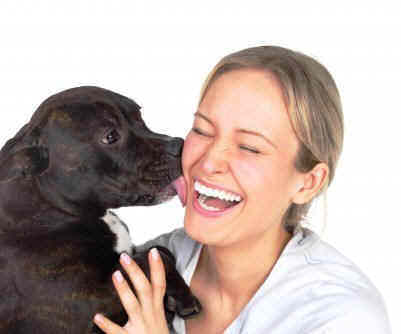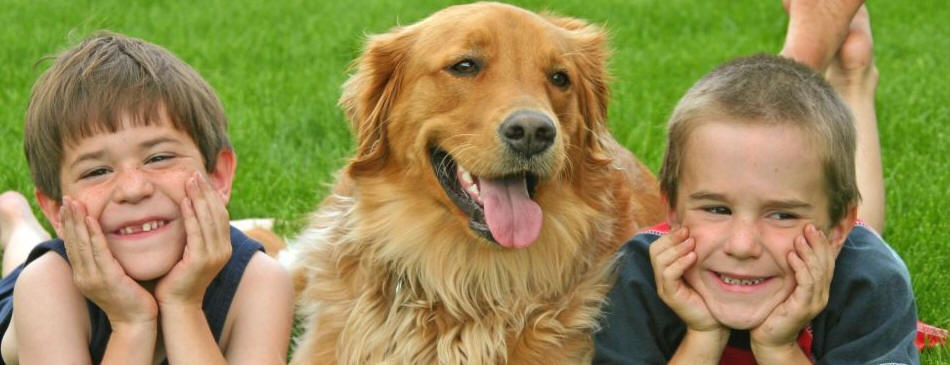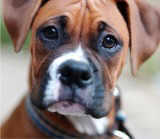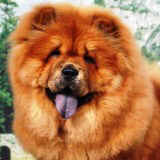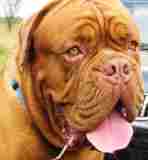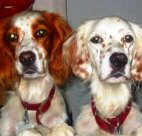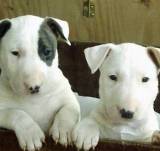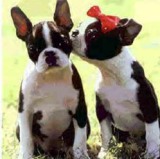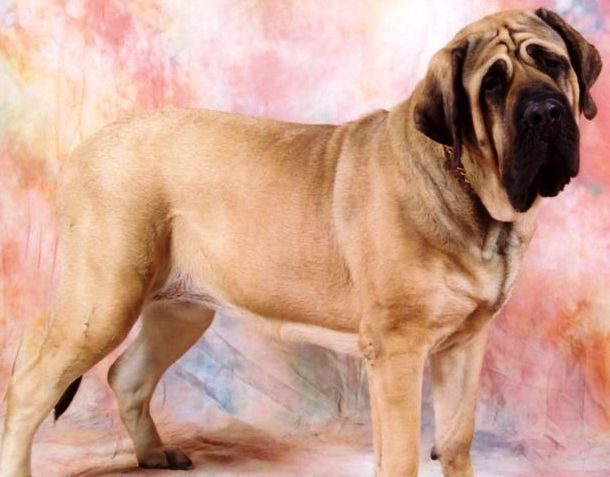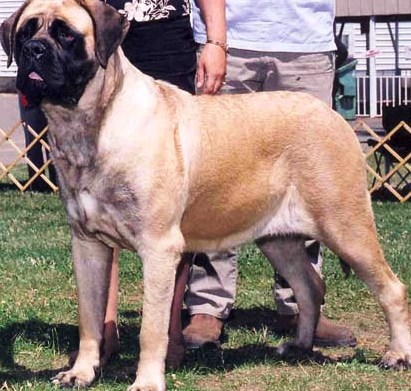|
One of the biggest dogs recognized by the American Kennel Club, the
massive Mastiff loves being around people and is known to bond
closely with his ‘family.’ A combination of grandeur and good nature
as well as courage and docility, he was bred in England and used as
a watchdog for more than two thousand years. As early as 3000 B.C.,
drawings on Egyptian monuments depict typical Mastiffs. Later, even
Caesar noticed the fearless, strong Mastiff as it fought alongside
the British soldiers in 55 B.C. Impressed by the breed’s courage, he
brought a group of them back to Rome and forced them to take part in
bull baiting, lion fighting and fights with human gladiators. Later,
the Mastiff became popular with the peasants in England, where the
dogs were used to keep
wolves and other dangerous predators under
control as well to as protect the home. The breed was registered
with the AKC in 1885.
General Appearance
The Old English Mastiff is one of the heaviest breeds; a male
Mastiff can exceed 200 pounds. This dog is very massive, powerful
and muscular. The head is heavy and square with a short muzzle.
There is a black mask around the eyes and nose no matter what the
general coat color. The eyes are small, dark, and hazel. The small
ears should also be dark-colored. The teeth should meet in a
scissors or slightly undershot bite. The tail is set quite high,
tapers to the tip, and reaches to the hocks. The short coat comes in
golden fawn, light fawn, brindle, silver, tiger, and apricot and is
easy to groom. In the eighteenth century it was described as
follows: "As a lion is to a cat, so is a mastiff compared to a dog."
Temperament
The Mastiff is a dignified and loyal dog, with bags of courage, a
pleasant nature, and high intelligence. The gigantic proportions of
this breed make the Mastiff an effective deterrent and watchdog.
Many Mastiffs are gentle giants, and have an even temper and docile
nature. However, there can be aggression in some lines, and timidity
in others. Early socialization is important with this breed in order
to promote stability and confidence. These dogs require effective
training, and although not difficult to train they do require a
confident and assertive owner and are best suited to those with
experience of dog ownership. This is not a breed for those with
little time for a pet, as these dogs thrive on companionship and
affection from their families. The Mastiff is not an overly active
dog, but he does need a moderate amount of exercise in order to keep
him fit and healthy. Although these dogs do not bark much, he is too
large for apartment living, and does need somewhere secure and safe
to exercise and enjoy activities, as well as regular walks. The
Mastiff gets along well with children that he has been brought up
with, and many will get along fine with other pets, although some
can be dominant. Many will also be friendly and welcoming toward
strangers. In the right environment, and with early socialization
and the correct training, these dogs make good family pets.
Grooming
Grooming for the Mastiff is quite minimal, however can be somewhat
difficult due to its large size. Frequent brushing and occasional
wiping down with a towel is recommended. Brushing is necessary daily
because the Mastiff is a very heavy shedder. Their hair is coarse
and short and often will come off in your hands as you are petting
the dog. The hair also sticks to carpet, upholstery, and clothing.
The dog should be bathed only when necessary. It is also essential
that the dog's ears, eyes, and nails are also maintained. The ears
should be cleaned on a regular basis to prevent ear mites and other
infections. The eyes should be cleaned as well.
Health Problems and Life Expectancy
As with many larger dog breeds, the Mastiff has a relatively low
life expectancy compared to some breed, and lives for around 5-10
years. There are a number of health problems to look out for with
this breed, and this includes: luxating patella, strokes, epilepsy,
spinal problems, eye problems, thyroid disorders, OCD, HOD, HD and
elbow dysplasia, heart defects, bloat, kidney problems, and
sensitivity to drugs and chemicals. They can also suffer heatstroke
in very hot conditions.
Activity Level
The Mastiff is generally a lazy animal, but will be happier and
healthier when exercised regularly. They should always be kept on a
leash. They are not a very playful breed and this combined with the
breed's laziness can make it difficult to find activities for the
owner and dog to do together. This is a great dog for a relatively
inactive person as a walk through the park or neighborhood is
considered sufficient exercise. They do not do well in the heat and
so it is important that the dog is not over exercised when the
weather is warmer.
|
